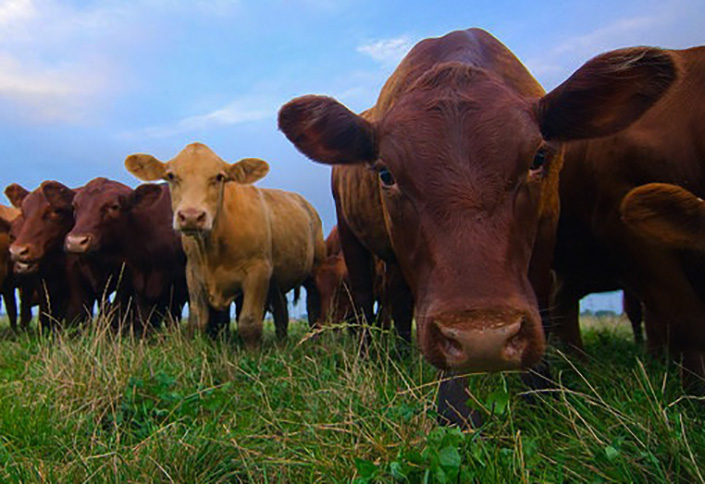Bovine respiratory disease: Team will study practices in beef production

A Texas A&M researcher will lead a scientific team from three research universities in a four-year study to determine what effect certain management practices used at different phases of beef production can have on bovine respiratory disease, or BRD.
Texas A&M will collaborate with Kansas State University and Mississippi State University on the study with $465,000 in funding from the U.S. Department of Agriculture’s National Institute of Food and Agriculture.
“BRD is hard to simplify as there are multiple risk factors and pathogens involved, but it is one of the biggest health issues facing the beef and dairy industries,” said Sarah Capik, assistant professor of ruminant animal health at Texas A&M AgriLife Research in Amarillo, with a joint appointment at the Department of Veterinary Pathobiology, Texas A&M College of Veterinary Medicine and Biomedical Sciences.
How cattle are managed has the potential to impact BRD risk, but further research is needed to quantify those impacts, Capik said.
The project’s research team has three objectives:
- Quantifying vaccination impact during preweaning on BRD risk during backgrounding and performance during preweaning.
- Comparing the impact of marketing strategy on BRD risk and performance during backgrounding.
- Exploring whether pen- and yard-level management factors are related to health outcomes at the feedlot.
They also will take samples at key time points to evaluate whether inflammatory mediators can be used to predict health or performance.
“Our project will study whether vaccinations prior to weaning, as well as whether how the calf is marketed after weaning, have an effect on the risk of a calf becoming sick or dying from BRD,” Capik said. “We expect calves sent directly to a backgrounding facility will experience fewer BRD-related events than those going through marketing avenues where they are commingled with other cattle and their arrival at the next facility is delayed.”
Mississippi State and Texas A&M will be primarily responsible for the first two objectives, coordinating to use calves born at the Mississippi Agricultural and Forestry Experiment Station’s Prairie Research Unit and then, once weaned, sending them to the Texas A&M AgriLife Research feedlot in Bushland for the remainder of the project.
The Kansas State team will lend their expertise to the work done in the first two objectives and also explore how various management practices in the feedlot – animal density, flow and exposure – affect BRD risk while cattle are in the feed yard using a database of feedlot records to evaluate relevant associations.
“Ultimately, the goal is to identify ways to decrease the incidence of BRD,” Capik said. “Less BRD and healthier cattle mean less need for antimicrobials to treat sick cattle and more sustainable beef production.”

